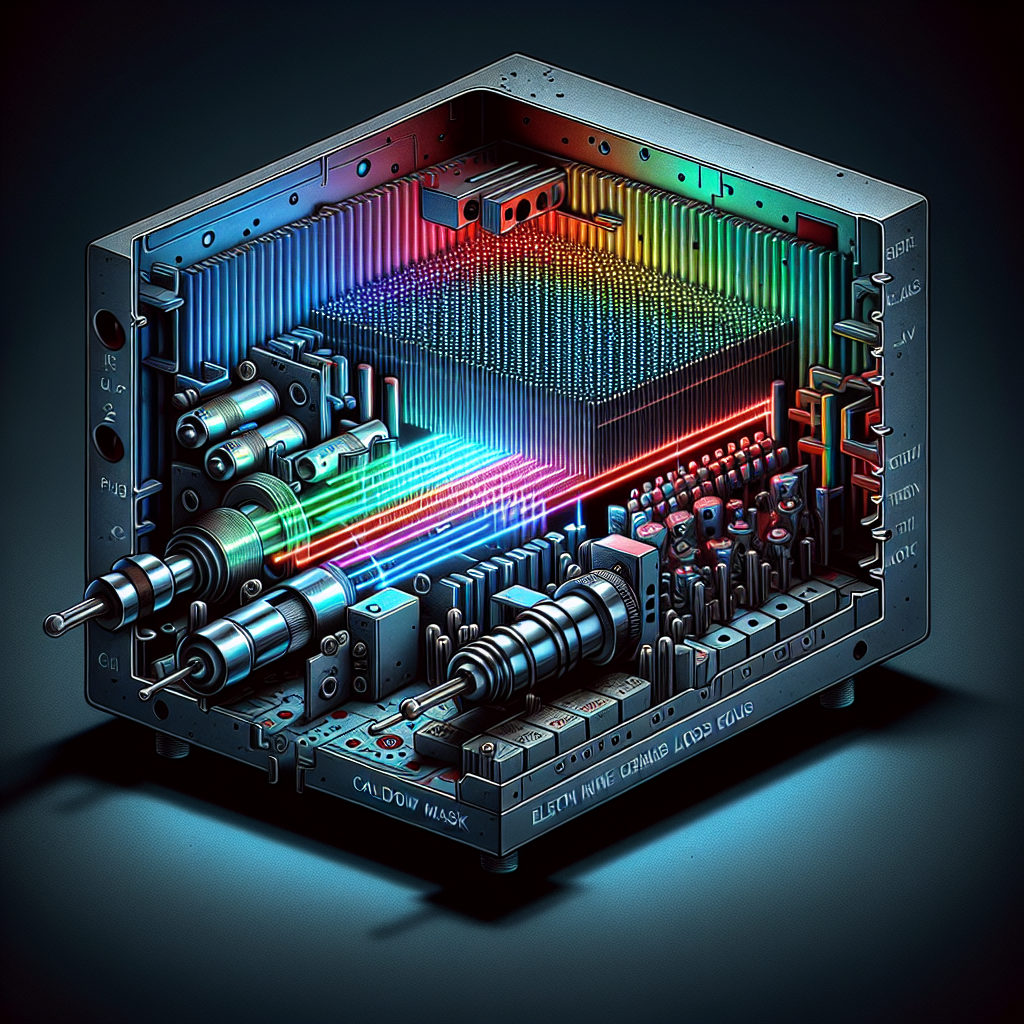Introduction to Color CRT Technology
Color Cathode Ray Tubes (CRTs) have been a staple in television and monitor technology for decades. Despite being largely replaced by modern flat-panel displays such as LEDs and OLEDs, understanding how color CRTs function provides valuable insight into the evolution of display technology. One of the crucial components in a color CRT is the shadow mask. This article explores the fundamental function of the shadow mask and its importance in producing clear and vibrant images.
Basic Structure of a Color CRT
A color CRT is composed of several key components that work together to produce images:
- Electron Guns: Usually there are three electron guns, each corresponding to the primary colors of light (red, green, blue).
- Phosphor Coating: The inner surface of the screen is coated with phosphors that emit light when struck by electrons.
- Deflection System: This system manipulates the path of electrons to direct them towards specific areas on the screen.
- Shadow Mask: A thin metal sheet with tiny holes placed close to the phosphor-coated screen.
The Role of the Shadow Mask
The shadow mask plays an essential role in ensuring the accuracy and quality of color images produced by a CRT display. Its main functions include:
- Color Separation: The shadow mask ensures that electrons from each of the three electron guns only hit the corresponding color phosphors (red, green, or blue), avoiding color bleeding or mixing.
- Image Sharpness: By controlling the path of the electrons, the shadow mask enhances the sharpness and clarity of the displayed image.
Detailed Functioning of the Shadow Mask
The shadow mask is positioned between the electron guns and the phosphor-coated screen. When the electron guns emit beams, the shadow mask allows only a portion of these beams to pass through its tiny holes. These beams then strike their corresponding phosphor dots on the screen. The table below summarizes the critical interaction between the electron guns, shadow mask, and phosphor dots:
| Component | Function |
|---|---|
| Electron Guns | Emit beams corresponding to red, green, and blue colors. |
| Shadow Mask | Allows specific portions of beams to pass, aligning them with corresponding phosphor dots. |
| Phosphor Dots | Emit light when struck by electrons, forming the image. |
Importance of the Shadow Mask
The shadow mask is indispensable for multiple reasons:
- Prevents Color Mixing: Without the shadow mask, electrons from different guns could hit unintended phosphor dots, leading to inaccurate colors and poor image quality.
- Ensures Proper Color Alignment: By guiding electron beams precisely, the shadow mask ensures that each electron strikes the correct phosphor dot, preserving the integrity of the intended color.
Technical Specifications of the Shadow Mask
The effectiveness of a shadow mask is influenced by its technical specifications, which include:
- Hole Size: Smaller holes provide better precision but can reduce brightness.
- Material: Usually made of metal, it must be durable enough to withstand thermal expansion.
- Mask Alignment: Precise alignment with the phosphor screen is crucial for accurate color reproduction.
Common Issues Related to Shadow Masks
Despite its advantages, the shadow mask can also present some challenges:
- Moiré Patterns: Interference patterns that can appear due to the alignment of the shadow mask grid and the phosphor dots.
- Mask Damage: Physical damage or thermal expansion can distort the shadow mask, affecting color accuracy and image quality.
Conclusion
In conclusion, the shadow mask serves as a critical component in the functioning of a color CRT. By guiding electron beams to their corresponding phosphor dots, it ensures accurate color reproduction and sharp image quality. Understanding the role and functioning of the shadow mask deepens our appreciation for the complexities involved in early display technologies and the advancements that have since been made.

